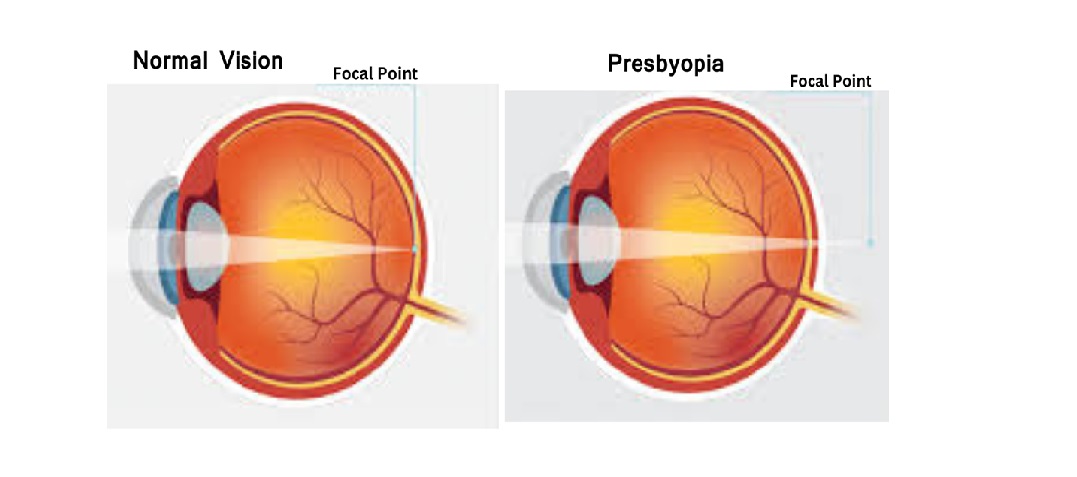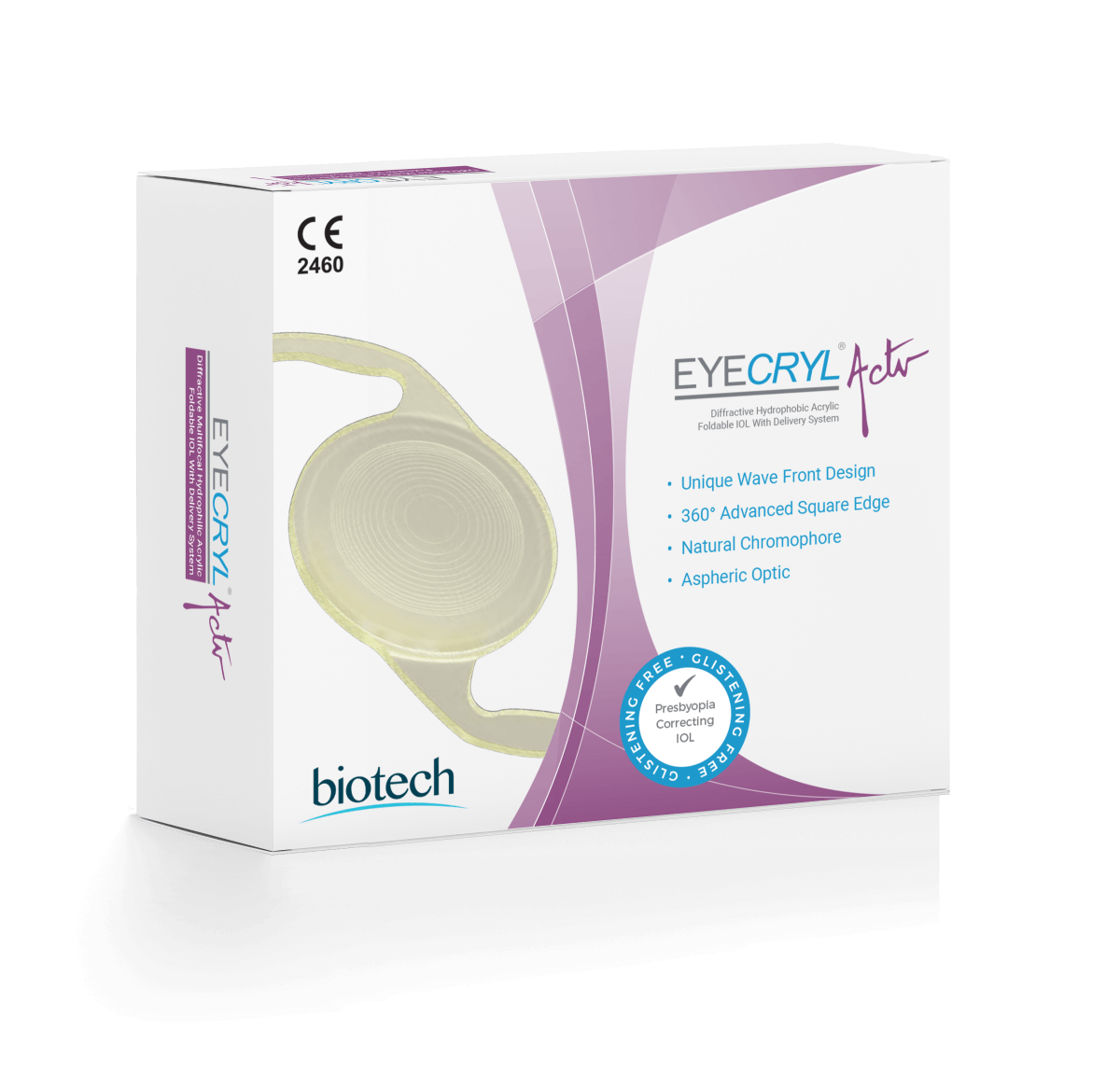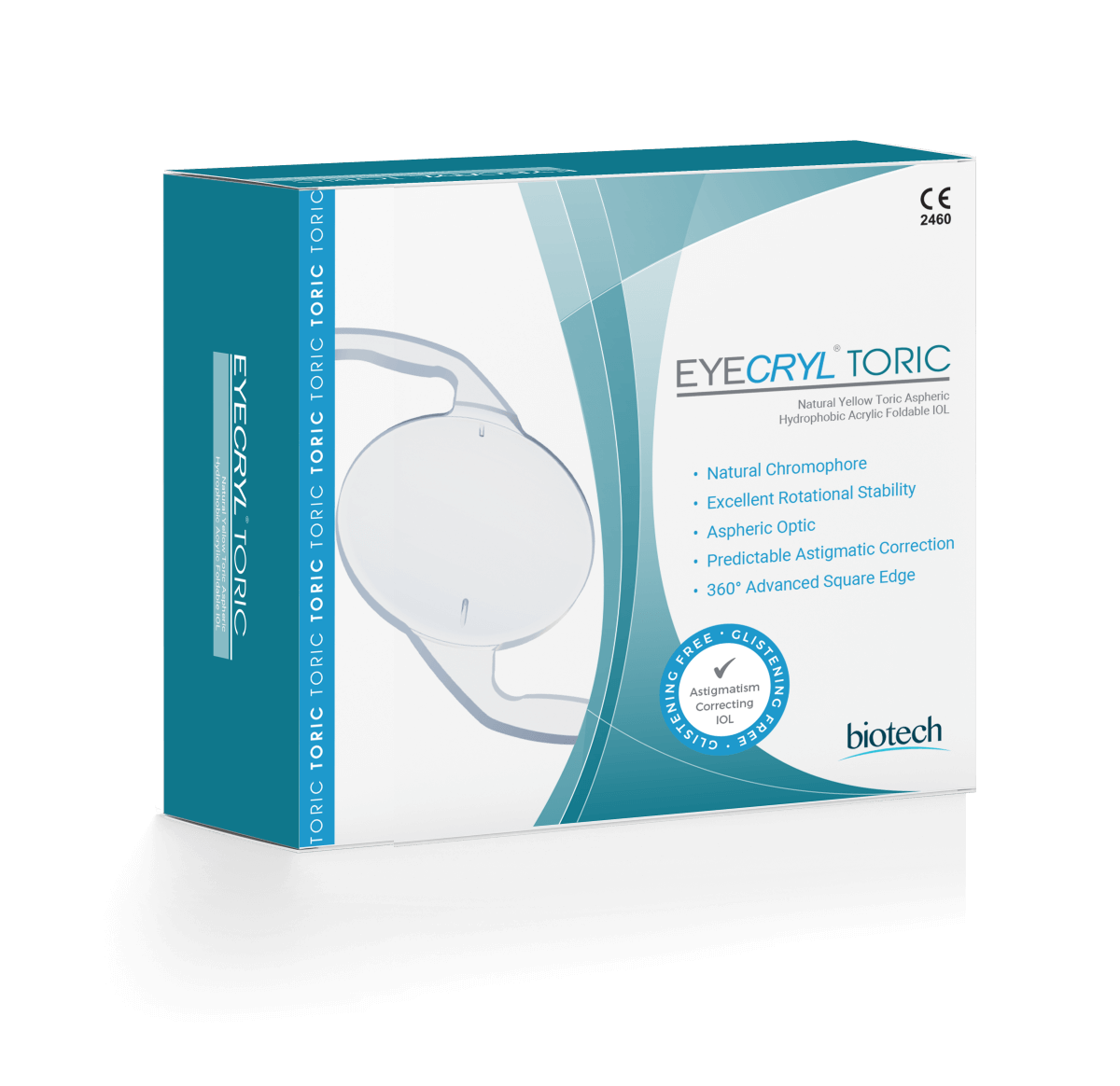
What is Presbyopia and How Can It Be Corrected?
Presbyopia is a common vision problem that occurs as a result of the natural aging process, usually beginning around the age of 40. It involves a gradual loss of the eye’s ability to focus on close objects because the lens, which is soft and flexible in youth, hardens over time. As the lens hardens with age, you lose the ability to focus light properly for near vision, making it more difficult to focus on close objects. One of the most effective ways to correct presbyopia is through the use of reading glasses, which allow individuals to focus on close objects with ease.
These glasses adjust the focal length for near vision, enabling clearer and more comfortable close-up viewing. For those who prefer not to wear separate reading glasses, progressive lenses offer a seamless transition from distance vision to near vision within a single pair of glasses. Monovision contact lenses provide another solution by correcting one eye for near vision and the other for distance vision, balancing overall vision. Multifocal contact lenses are also available and offer clear vision at multiple distances. For individuals seeking a more permanent solution, LASIK surgery can reshape the cornea to improve focus for both near and distance vision. This surgical option can significantly reduce dependence on glasses or contact lenses.
What Are the Symptoms of Presbyopia?
Presbyopia is a vision problem that typically starts around the age of 40 and worsens with age. The primary symptoms of presbyopia include
blurred vision when focusing on close objects, such as books, electronic devices, or other reading materials. People often find themselves holding reading materials at arm’s length to see more clearly, which can lead to discomfort and inconvenience. Other common symptoms include eye strain and fatigue when trying to focus on near tasks for extended periods. Activities such as reading, sewing, or using a computer can become more challenging due to this vision issue. Headaches may also occur, especially when the eyes are under stress from trying to focus on close objects. These symptoms can interfere with daily activities, making it important to seek correction for presbyopia to improve quality of life.
How is Presbyopia Diagnosed?
Presbyopia is diagnosed during a comprehensive eye exam conducted by an optometrist or ophthalmologist. The exam includes tests such as refraction to measure your prescription and near-point assessments to evaluate your ability to focus on close objects. During the exam, you may be asked to read text or focus on objects at different distances to determine your near vision capacity. Additional tests may be performed to assess the overall health of your eyes and rule out other potential causes of blurred vision. Through these evaluations, your eye care professional can accurately diagnose presbyopia and recommend the most appropriate corrective measures.
How is Presbyopia Treated?
There are various ways to treat presbyopia depending on individual needs and preferences.
To treat presbyopia, options such as reading glasses and progressive lenses provide clear near vision. These glasses are often prescribed for specific activities such as reading or using electronic devices. Contact lenses can also correct presbyopia. Monovision contacts adjust one eye for near vision and the other for distance vision, while multifocal contact lenses offer clear vision at multiple distances. For those seeking a more permanent solution, LASIK surgery can reshape the cornea to improve focus for both near and distance vision. Multifocal intraocular lenses (IOLs) can also be implanted during cataract surgery to provide similar correction. For individuals undergoing cataract surgery, there is an option to implant multifocal intraocular lenses (IOLs). These lenses are designed to provide clear vision at multiple distances by focusing light for both near and distance vision. This treatment can offer a permanent solution to presbyopia, reducing the need for glasses or contact lenses and allowing patients to enjoy improved vision across various tasks.
What Happens If Presbyopia is Not Treated?
If presbyopia is not treated, it can significantly impact daily activities that require close-up vision, such as reading, working on a computer, or using a smartphone. This can lead to headaches and fatigue, making it difficult to maintain focus and productivity throughout the day.
What is the Difference Between Myopia and Presbyopia?
Myopia and presbyopia are distinct vision conditions. Myopia, or nearsightedness, makes distant objects appear blurry while close objects are clear due to light focusing in front of the retina. Presbyopia, an age-related condition starting around 40, causes difficulty focusing on close objects because the lens hardens and loses flexibility. Distance vision often remains unaffected.
At What Age Does Presbyopia Begin?
Presbyopia typically begins around the age of 40 due to the natural aging process. At this point, the lens loses its flexibility, making it harder to focus light on close objects. The condition gradually worsens and may stabilize around the age of 65.
Can You Slow Down Presbyopia?
Presbyopia is a natural part of aging and can’t be fully prevented. However, you can slow its progress and manage symptoms by taking breaks, using proper lighting, doing eye exercises, and maintaining a healthy lifestyle. Wearing sunglasses can also help protect your eyes from UV rays and slow down the aging process.
At What Age Does Presbyopia Stop?
Presbyopia is a progressive condition that continues to worsen until around the age of 65. At this point, the progression may stabilize, but the effects of presbyopia will persist.
FAQ
Is Presbyopia Farsightedness or Nearsightedness?
Presbyopia is neither farsightedness nor nearsightedness. It is a distinct vision problem caused by the aging process, where the lens loses its flexibility and ability to focus light properly on close objects. Unlike farsightedness (hyperopia) or nearsightedness (myopia), presbyopia primarily affects near vision.
Does Presbyopia Get Worse Without Glasses?
Presbyopia may not worsen without glasses since it’s a natural part of aging that continues to develop even if you don’t wear glasses. But without corrective lenses, you might have more noticeable blurry vision when looking at things up close, causing more eye strain and discomfort.
Can Glasses Correct Presbyopia?
Yes, glasses can correct presbyopia effectively. Reading glasses help focus on close objects, allowing clearer vision for activities such as reading. Progressive lenses provide a seamless transition from distance to near vision within a single pair of glasses, offering a versatile solution for presbyopia.
What is the Other Name of Presbyopia?
Presbyopia is sometimes referred to as “age-related farsightedness” due to its occurrence in aging individuals and its effect on focusing on close objects.
How to Fix Presbyopia Naturally?
Managing presbyopia naturally can be difficult since it’s a normal part of aging. However, maintaining eye health through proper diet, exercise, and eye protection can help manage the condition and may slow down its progression.
What Makes Presbyopia Worse?
Poor lighting, excessive screen time, and neglecting to take breaks while doing close-up tasks can worsen presbyopia. Moreover, eye strain, tiredness, and health problems such as diabetes or hypertension can further advance presbyopia and intensify its symptoms.
Our Bestsellers
Categories
Company
Media
Follow Us
© Copyright Biotech /Terms Of Use - Privacy Policy
Version 2_CT_1212222



